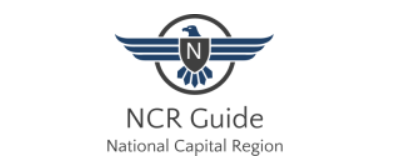The much-anticipated Delhi-Ghaziabad-Meerut Regional Rapid Transit System (RRTS) is progressing rapidly, with officials confirming that the project remains on track for completion by June 2025. This high-speed rail corridor, implemented by the National Capital Region Transport Corporation (NCRTC), is set to revolutionize intercity travel in Delhi-NCR, drastically reducing travel time between the national capital and Meerut.
Key Features of the Delhi-Meerut RRTS
- Speed & Efficiency: The RRTS will operate at a design speed of 180 km/h, with an average speed of 100 km/h, making it one of the fastest regional rail networks in India.
- Reduced Travel Time: The journey from Delhi to Meerut, which currently takes around 2.5 to 3 hours by road, will be slashed to under 60 minutes.
- Modern Stations: The 82 km-long corridor will have 25 stations, including key locations such as Sarai Kale Khan, Anand Vihar, Sahibabad, Ghaziabad, Muradnagar, Modi Nagar, and Meerut South.
- Semi-High-Speed Rolling Stock: The RRTS will use modern, air-conditioned coaches, featuring premium class seating, automatic fare collection, and real-time passenger information systems.
- Intermodal Connectivity: Major transit hubs like Anand Vihar ISBT, Sarai Kale Khan, and Ghaziabad Railway Station will be seamlessly integrated into the RRTS network, allowing smooth transitions between metro, bus, and rail services.
- Energy Efficiency & Sustainability: The system incorporates regenerative braking technology, solar-powered stations, and energy-efficient infrastructure, making it an eco-friendly transit solution.
Project Status & Expected Milestones
- Currently Operational: The first 17 km priority section, from Sahibabad to Duhai, was inaugurated in October 2023, with trains now running at full capacity.
- Upcoming Phases:
- Duhai to Meerut South by mid-2024
- Final stretch to Sarai Kale Khan, Delhi by June 2025
- Testing & Trials: The Meerut South to Modipuram segment is undergoing testing and is expected to be operational by early 2025.
Benefits for Commuters and Businesses
- Decongesting Roads: The RRTS is expected to reduce vehicular congestion on the Delhi-Meerut Expressway and other arterial roads.
- Boost to Real Estate: Areas around RRTS stations are already witnessing increased demand for residential and commercial developments.
- Job Creation & Economic Growth: The corridor is expected to generate thousands of direct and indirect jobs and boost economic activities along its route.
Challenges & Future Expansions
- Land Acquisition Issues: Some portions of the project faced delays due to land acquisition disputes and relocation of existing structures.
- Funding & Cost Escalation: The project, originally estimated at ₹30,000 crore, has seen cost escalations due to inflation and technical challenges.
- Extension Plans: NCRTC has proposed extending the RRTS network to other regions like Alwar, Panipat, and Jaipur, further strengthening regional connectivity.
FAQs
Q1: How much will the ticket fare be for the Delhi-Meerut RRTS?
A: The fares are expected to be competitive with existing travel options, likely ranging from ₹50 for short distances to around ₹250-₹300 for the full Delhi-Meerut journey.
Q2: How frequently will the trains run?
A: During peak hours, RRTS trains will run every 5-10 minutes, ensuring minimal waiting time for passengers.
Q3: Will the RRTS be connected to Delhi Metro?
A: Yes, the Sarai Kale Khan and Anand Vihar stations will provide seamless integration with Delhi Metro, allowing passengers to switch networks easily.
Q4: Can I use my Delhi Metro card for RRTS?
A: The fare collection system will be automated and digital, with an option for interoperability with Delhi Metro’s smart card system.
Q5: How safe is the RRTS?
A: The system features advanced safety measures, including collision avoidance technology, CCTV surveillance, platform screen doors, and emergency response systems.
Final Thoughts
The Delhi-Meerut RRTS is set to transform public transportation in North India, offering fast, reliable, and sustainable connectivity. Once fully operational, it will not only reduce travel time and congestion but also boost economic development across the NCR region. As commuters prepare to experience this next-generation transit system, it is evident that the RRTS will play a pivotal role in shaping Delhi’s urban mobility in the years to come.
For more updates on infrastructure developments in Delhi-NCR, stay tuned!

